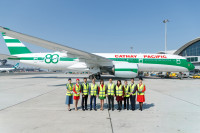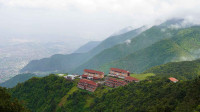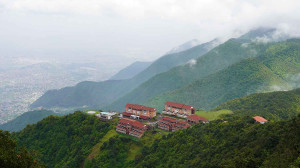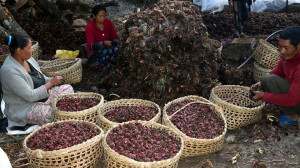Money
Flood wrecks Nepal-China trade route, sparks fears of festival price hike
Ahead of festivals, goods worth billions of rupees—including EVs, garments, and electronics—are damaged or stranded after Rasuwagadhi bridge was washed away.
Krishana Prasain & Anish Tiwari
A flash flood in the Lende river has damaged vital trade infrastructure at the Nepal-China border, disrupting the key Rasuwagadhi-Kerung trading route on the cusp of Nepal’s major festivals. Traders fear the losses may amount to billions of rupees, leading to price hikes on imported goods during the festive season. Lende is a tributary of the Bhotekoshi river and lies on the Chinese side.
According to traders, the Nepal-China Friendship Bridge in Rasuwagadhi has been swept away, and a dry port under construction has suffered severe damage. Sections of key roads in the area have also been affected.
With just two months left before the start of Nepal’s leading festivals, such as Dashain and Tihar, disruptions to the supply chain could drive up the cost of imports. Readymade garments, electronic items, footwear, and electric vehicles are among the primary imports through this border point.
“We are currently focused on the search and rescue rather than collecting detailed damage reports,” said Dhruba Prasad Adhikari, information officer at the Rasuwa District Administrative Office. He added that the damage assessment could take time due to poor weather conditions.
“As the weather remains unpredictable, aerial rescue by helicopter has become difficult. All communication networks have been knocked out, and the road network brought to a halt,” Adhikari said.
The flood also damaged the yard of the Rasuwa Customs Office and the electric vehicle charging station. Several trucks, containers, and EVs kept in the Rasuwa dry port in Timure for customs clearance have been submerged.
The district administration office confirmed that the dam of the Rasuwagadhi Hydropower Project sustained only minor damage but advised other hydropower projects to stay on high alert.
Nepal and China are connected by two major trade routes: Rasuwagadhi-Kerung and Tatopani-Zhangmu (also known as Khasa). Kerung lies about 190km from Kathmandu, while Tatopani is roughly 115km away.
While Tuesday’s floods caused extensive damage to the Rasuwagadhi-Kerung route, the Tatopani-Zhangmu corridor was already affected by earlier landslides. Traders now fear substantial losses and a sharp rise in prices of readymade garments, particularly those targeting the Dashain market.
Phunu Sherpa, president of the Bhotekoshi Chamber of Commerce, said dozens of container trucks headed to Nepal via the Tatopani border have been stranded in Nyalam, China, due to damaged roads.
“Some 40 to 45 metres of road sections in various parts of the Shigatse-Nyalam-Khasa corridor have been destroyed by floods and landslides, bringing transport to a standstill,” Sherpa said.
The Nyalam County government is reportedly working to resume road operations within two days by building emergency infrastructure.
With the Rasuwagadhi route now compromised, over 50 container trucks en route to Timure in Rasuwa have been redirected to Tatopani.
Ganga Bahadur Ghimire, senior vice president of the Nepal Trans Himalayan Border Commerce Association, said the actual loss figures are still unknown. Early estimates suggest damage to goods and physical infrastructure could be worth billions of rupees.
“We’ve heard that 40 to 50 electric vehicles have been submerged, 17 containers carrying apples have been washed away, and 22 to 25 containers filled with footwear and electronic goods—some already cleared through customs and others awaiting clearance—have been inundated,” Ghimire said.
An additional 30 to 40 containers, waiting for customs processing, have also been stranded.
Yamuna Shrestha, managing director of Cimex Inc., the authorised distributor of BYD vehicles in Nepal, said none of their EVs were damaged in the Rasuwagadhi flood.
“Some of our imported EVs were still en route, and others had already crossed the Miteri Bridge. So far, we have no reports of any damage to our vehicle,” Shrestha said.
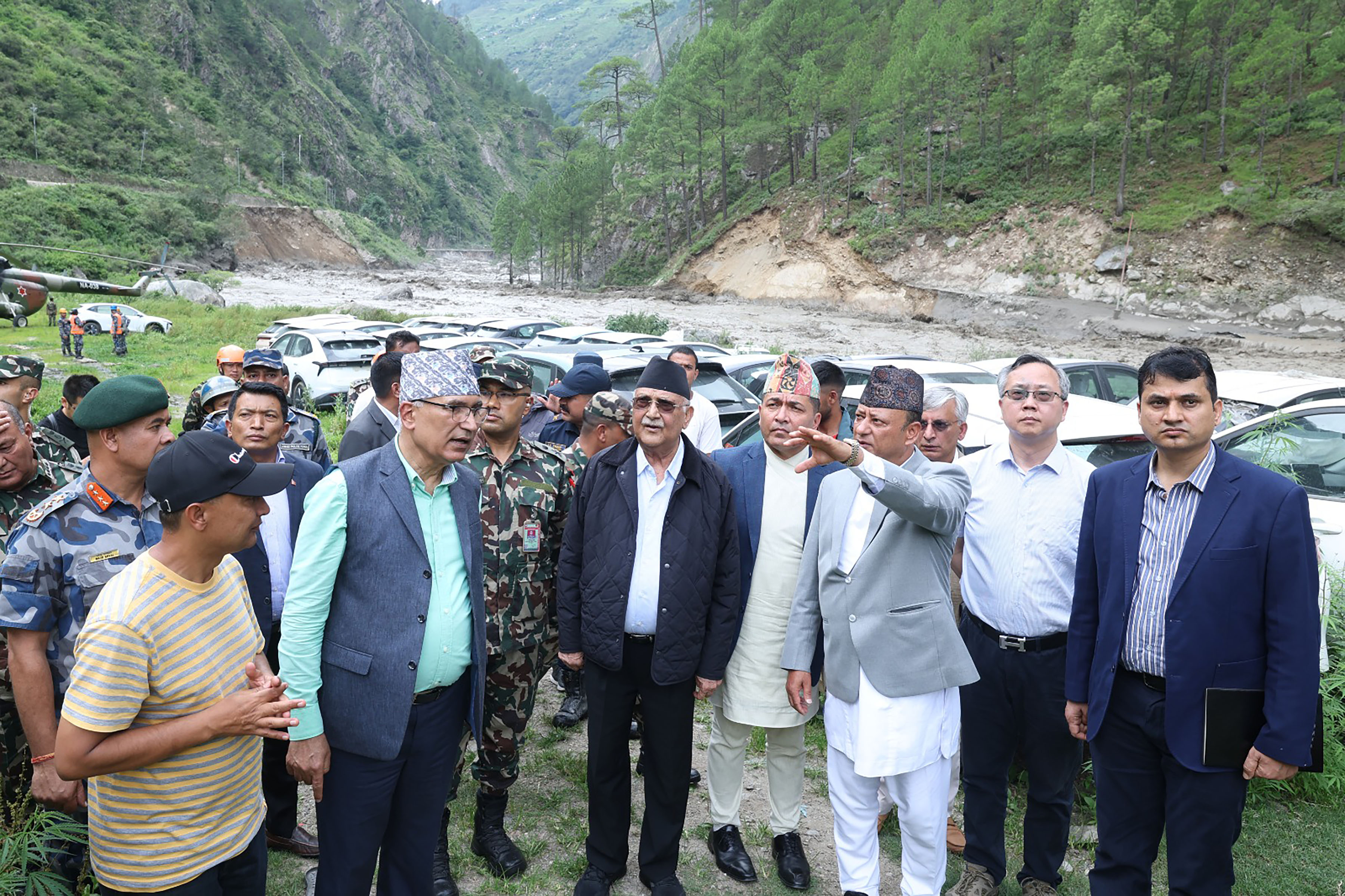
According to Ghimire, many containers remain stuck on the Kerung side, and the bridge’s destruction has left traders uncertain about when or how trade will resume.
“We don’t know how soon the route will reopen,” Ghimire said. “We urge the government to quickly build a Bailey bridge so that stranded containers can be cleared and festival-targeted goods can reach the markets.”
Not all traders are equally concerned, however. Some point to the increasing availability of Indian goods in Nepali markets, which began when China shut its border due to the Covid pandemic. Since then, India-made readymade garments have gained significant traction in Nepal, especially for festive and winter wear.
These traders say the shift to Indian imports has helped bridge the gap created by reduced access to Chinese goods. As a result, the Nepali market is now more reliant on Indian products, potentially reducing the availability—and perhaps affordability—of Chinese imports in the near future.
The Rasuwagadhi-Kerung route, which officially began operations in December 2014, became Nepal’s second major trade point with China after Tatopani. In 2017, it was upgraded to an international checkpoint, allowing cross-border travel with visas and passports.
Before that upgrade, only Nepali and Chinese nationals with proper documentation were permitted to cross the border.
In April 2023, China fully reopened the Rasuwagadhi-Kerung border point after keeping it closed for three years due to Covid-19 restrictions. Until Monday, 30 to 40 fully loaded cargo containers were entering Nepal daily through the Kerung checkpoint.
According to the Department of Customs, Nepal imported goods worth Rs298.77 billion from China during the last fiscal year, while exports to China totalled only Rs2.58 billion. The trade deficit stood at a staggering Rs296.18 billion.




 5.46°C Kathmandu
5.46°C Kathmandu


